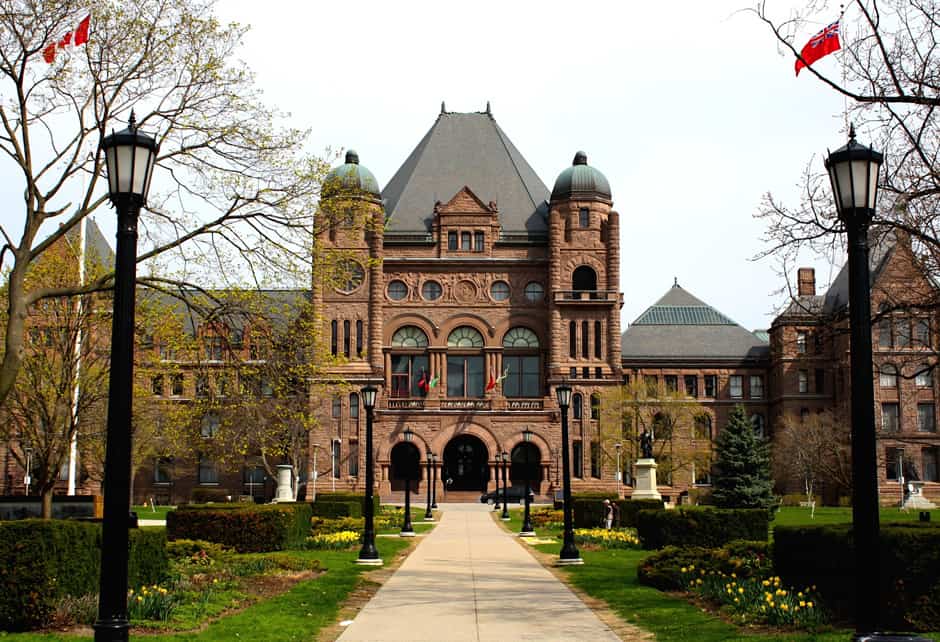Domestic students starting university in Ontario this year could be facing fees of nearly $10,000 by their fourth year, according to a new report by the Canadian Centre for Policy Alternatives (CCPA). In Ontario, the average cost of tuition and compulsory fees will reach $9,517.
The report, released on September 10, investigated rising tuition fees across Canada.
According to the report, the average total of tuition and compulsory fees paid by Canadian university students have nearly tripled since 1993–1994, after adjusting for inflation. According to the report, one of the main factors driving the rise of tuition fees is the decline of federal funding for post-secondary education.
Chronic post-secondary education underfunding has been a problem since the 1990s. Successive provincial and federal governments, regardless of political persuasion, have cut back on post-secondary education funding. In 1990, the average cost of annual tuition was between $1,000 and $2,000 a year.
Although education is a provincial responsibility, federal cash transfers play an important role in offsetting the cost of tuition prices. The average amount of federal cash transfers for post-secondary education dropped 50 per cent between 1991 and 2012.
Between 1993 and 2001, as public funding decreased, tuition fees increased from 18 per cent to 37 per cent of universities’ operating revenue.
Domestic tuition fees are regulated under Ontario’s Tuition Framework. Under the framework, tuition fee increases for domestic students cannot exceed three per cent per year for most programs and five per cent for graduate and professional programs.
The framework does not regulate international tuition fee increases. Individual post-secondary institutions are free to increase international tuition fees as much as they like.
This year, at the University of Toronto, international tuition fees are set to increase by an average of 7.2 per cent, while domestic tuition fees are set to increase by nearly three per cent.
A U of T spokesperson did not respond to requests for comment.
The report also said that post-secondary institutions are increasingly using compulsory ancilliary fees to fill funding gaps.
The Ontario Undergraduate Student Alliance, the Canadian Federation of Students-Ontario, and the University of Toronto Students’ Union have all called on Ontario to increase investment in post-secondary education.
On average, Ontario post-secondary students pay the highest tuition fees in Canada and have the highest debt. Ontario also has the lowest per-student funding in Canada.
The CCPA report also investigated how students selected their programs of study. Students who self-finance their education increasingly make the decision to study in programs with more lucrative career prospects versus programs of pure interest.
Pierina Camarena, a third-year economics student from Peru, wanted to study abroad and found that U of T was the cheapest option that provided the level of education she wanted to receive. “I think it was worth coming here, [but] I can’t compare my experience to what it would have been in other potential universities in the US,” Camarena said. Camarena said, given the chance to start university again, she would have chosen to study computer science, as that field has stronger career prospects.
Mitchell Bonney, a fourth-year geography student from the United States, said that the monetary cost was still much lower than comparable American institutions. “It was worth it for sure,” Bonney said, adding: “I couldn’t really imagine myself anywhere else.”
Provincial criticism of the report
Reza Moridi, the Ontario Minister for Training, Colleges and Universities, was critical of the report. In a press release, Moridi claimed that the CCPA mischaracterizes the cost of attending university in Ontario.
“By focusing purely on the sticker price of higher education, it glosses over student assistance programs designed to bring fairness to the system by offering decreased costs and increased access and affordability to those most in need,” said Moridi.
Moridi argued that Ontario’s financial assistance programs offset the high base tuition. “Once all government supports are factored in, the students with the greatest need pay substantially less, and virtually no student pays the full sticker price. The reality is that Ontario offers one of the most robust student assistance programs in Canada, with more than $1.1 billion provided to students each year — $800 million of which is in the form of non-repayable grants,” he added.
Dispute over tuition caps
The CCPA report also cast doubt on the effectiveness of government caps on tuition fee increases. Though the Ontario government has committed to a three per cent cap on increases until the 2017–2018 year, the report said that “undergraduate tuition has regularly broken through the previous 5% cap, hitting an average of 6.1% over the past three years, casting doubt on the veracity of the new 3% cap. Further, the cap only applies to undergraduate programs; tuition fees in other programs can and do continue to increase by as much as 8% annually.”
“The ministry is not aware of compliance issues with respect to the policy, which has been in place since 2013,” said Zak Paget, special assistant to the minister of training, colleges and universities. Paget said that the cap is flexible, allowing for university undergraduate, professional, graduate, and college programs to increase up to five per cent, while maintaining the three per cent overall cap.
Paget also took issue with the methodology used in the report, saying that the tuition calculations do not take into account certain programs exempt from the cap. He added that the calculated average yearly increases could be “somewhat higher than what would be experienced by individual students as they move from one year to the next.”


